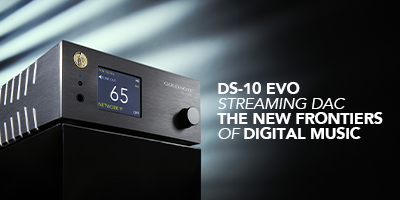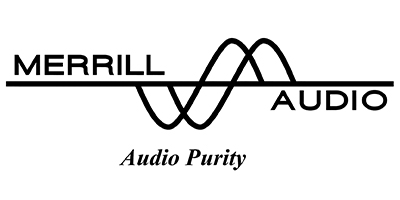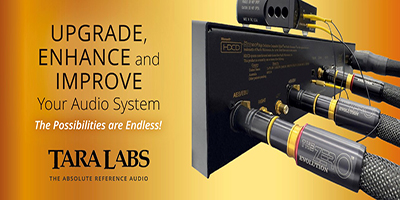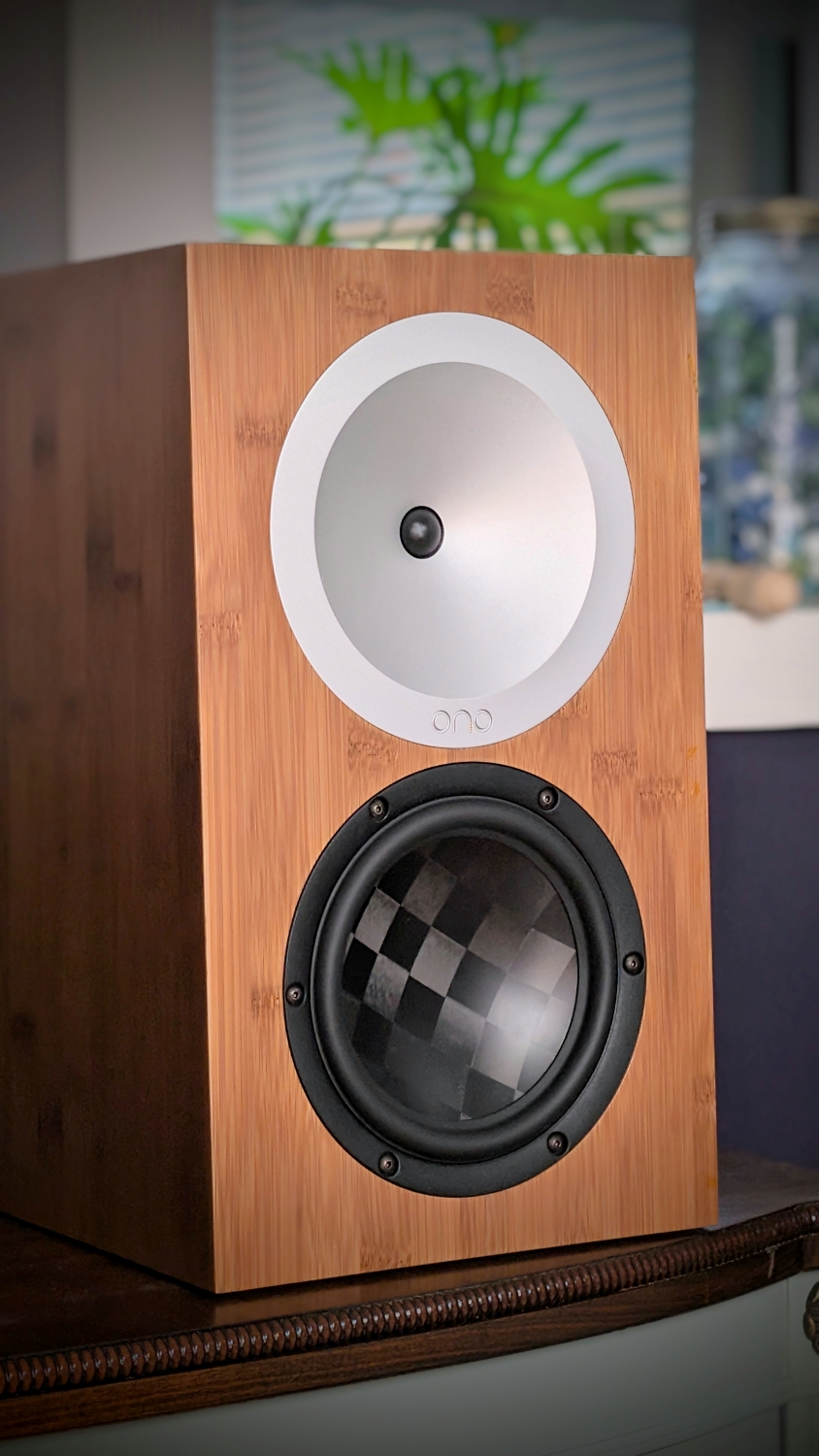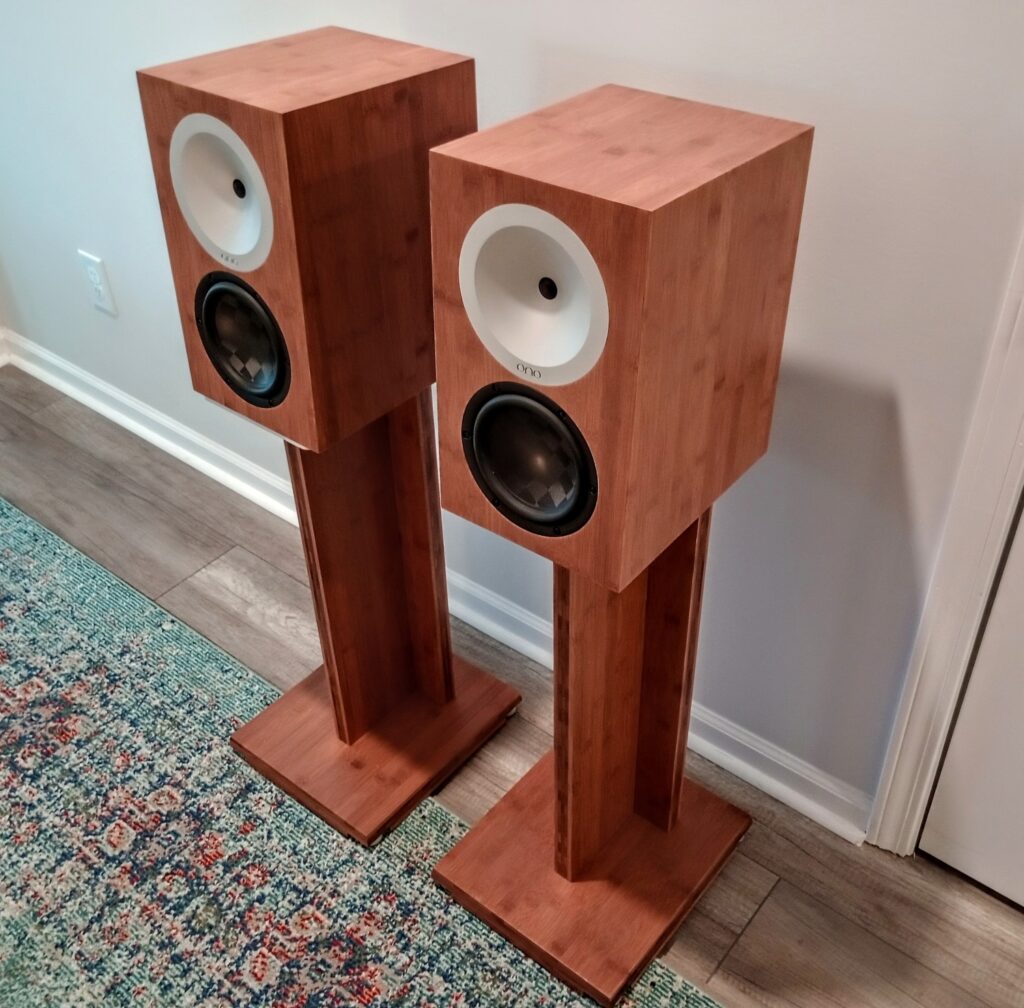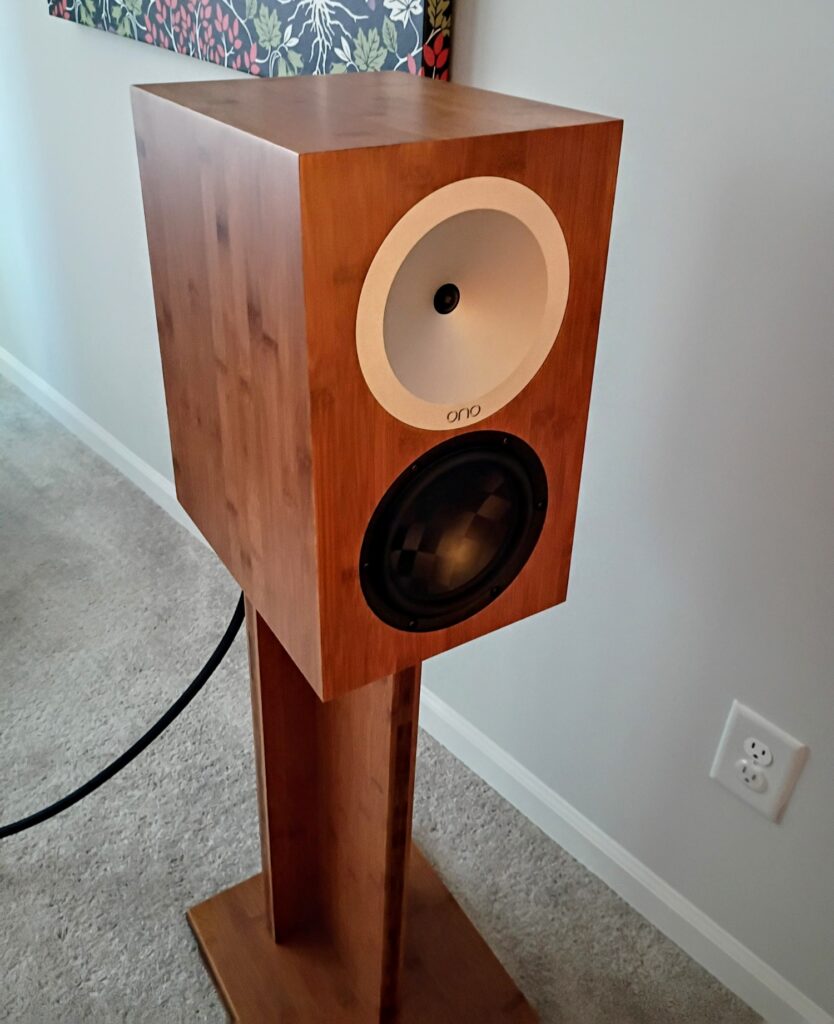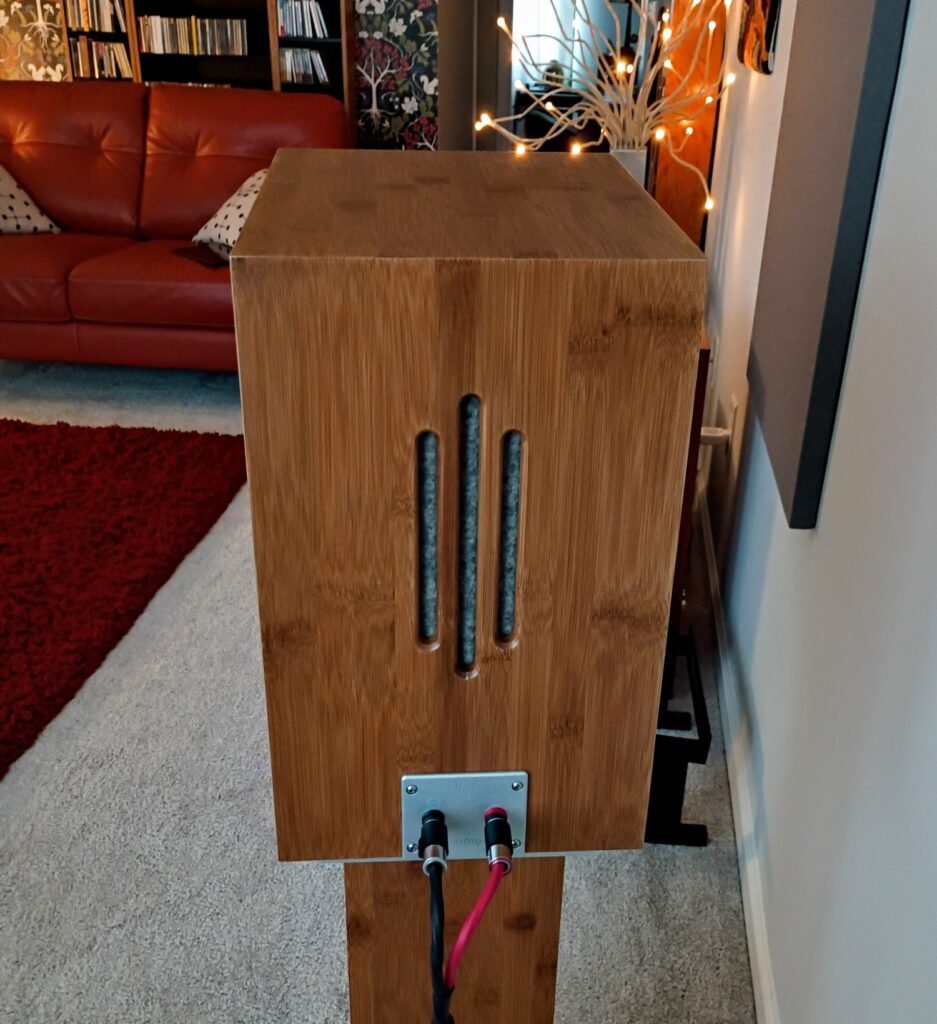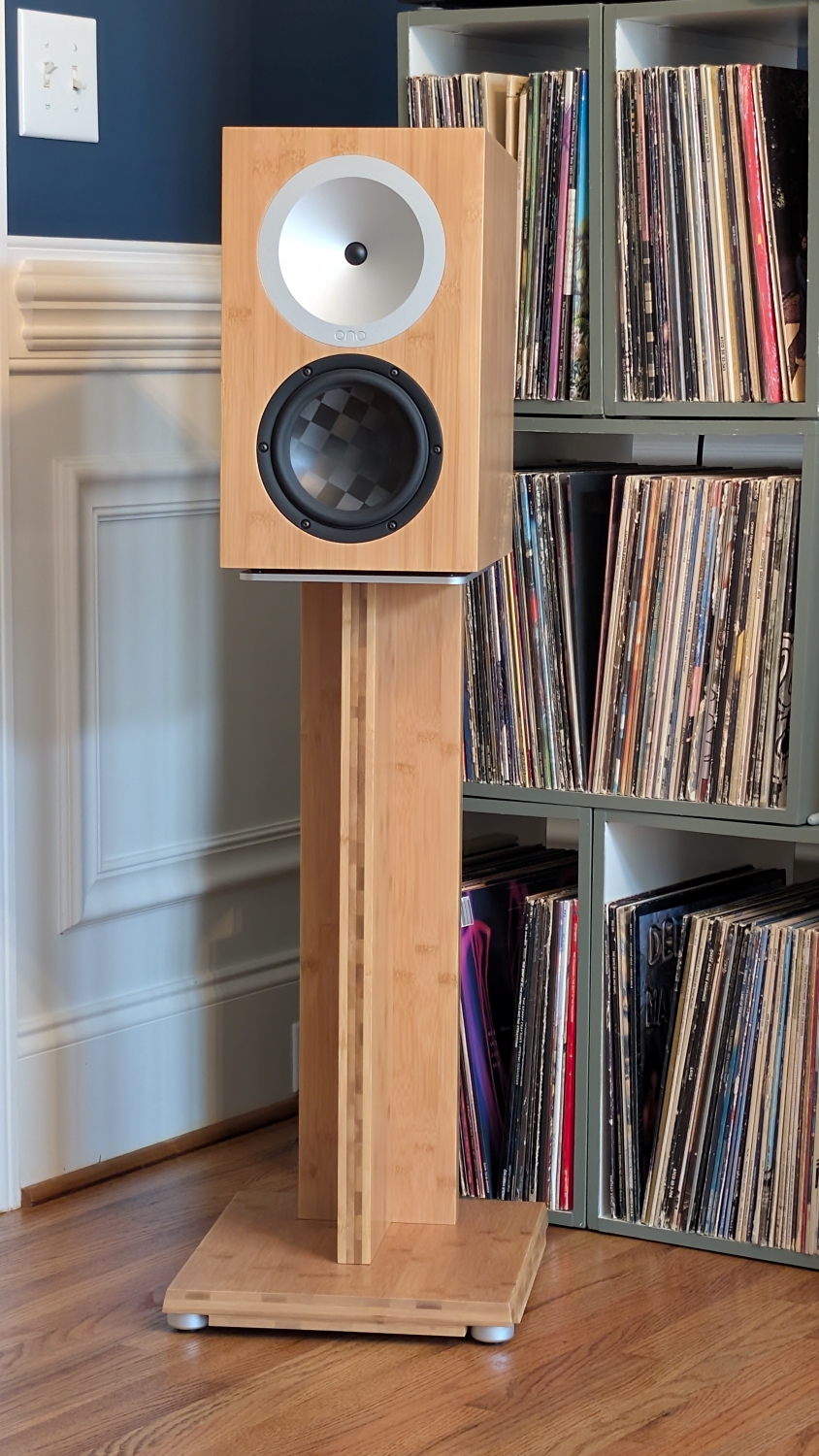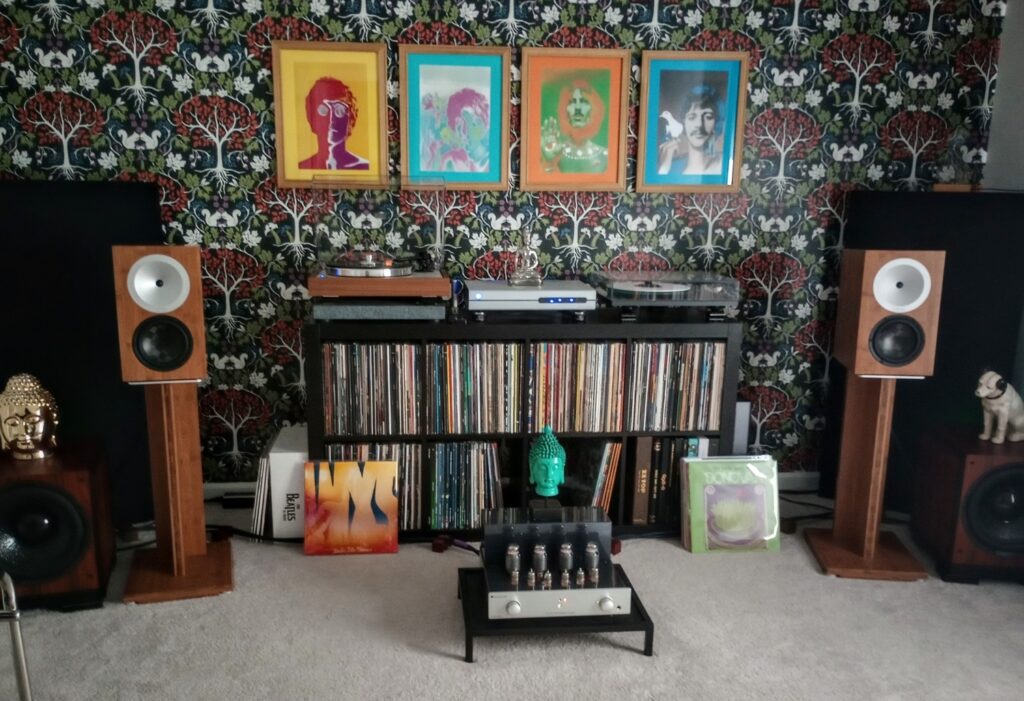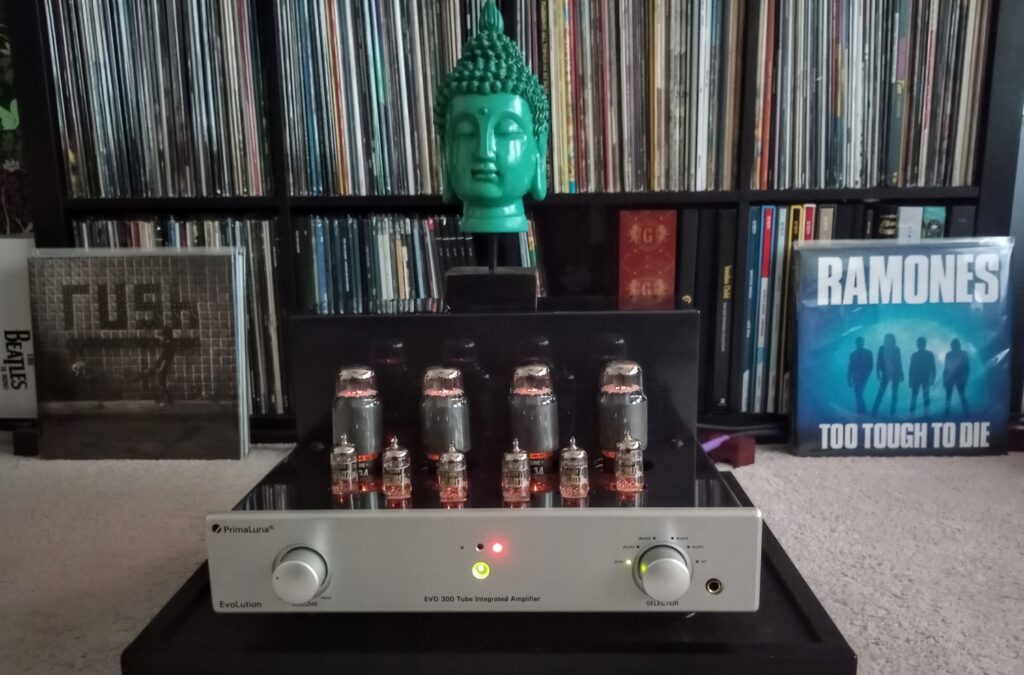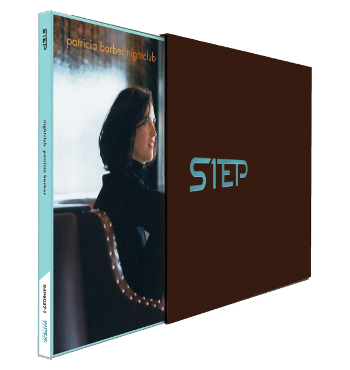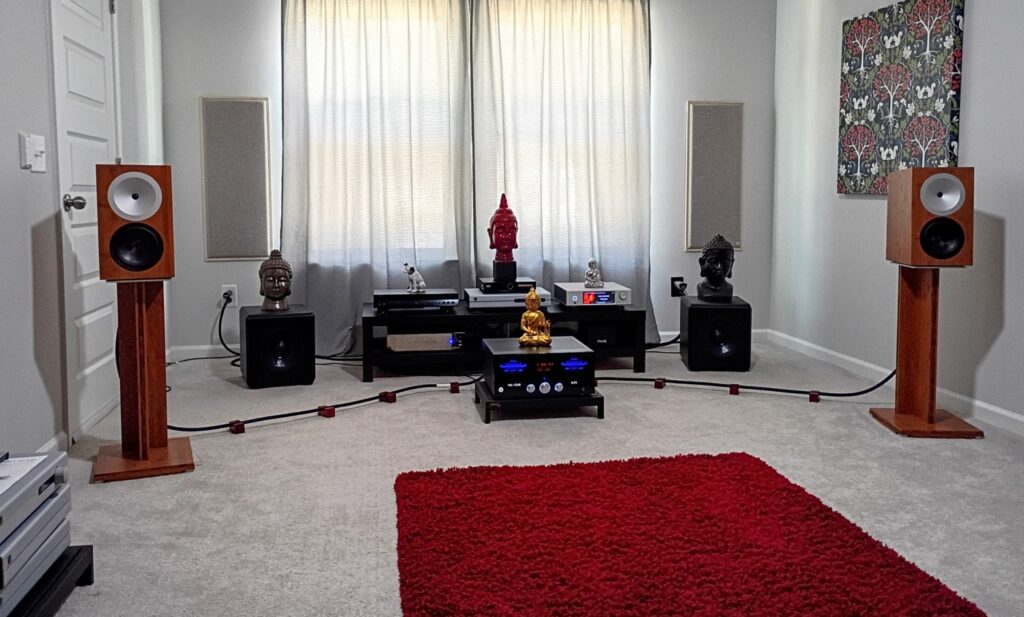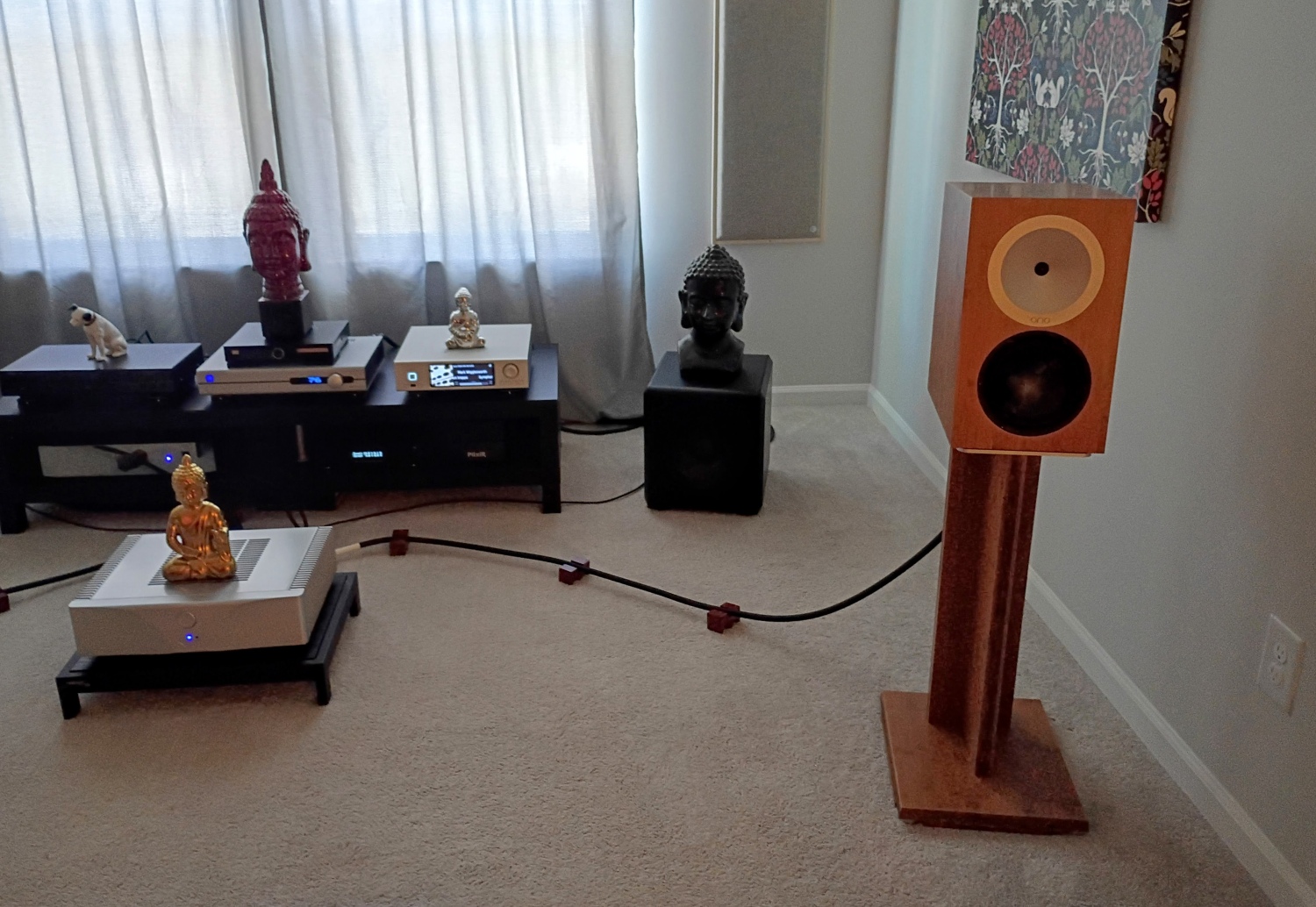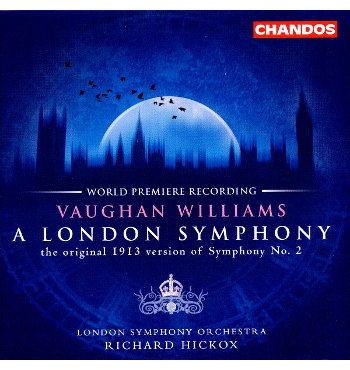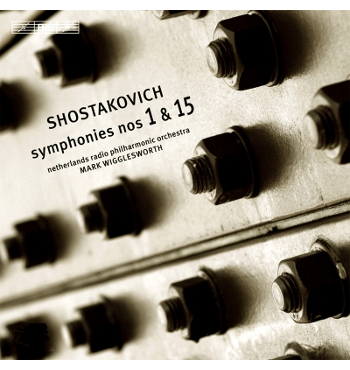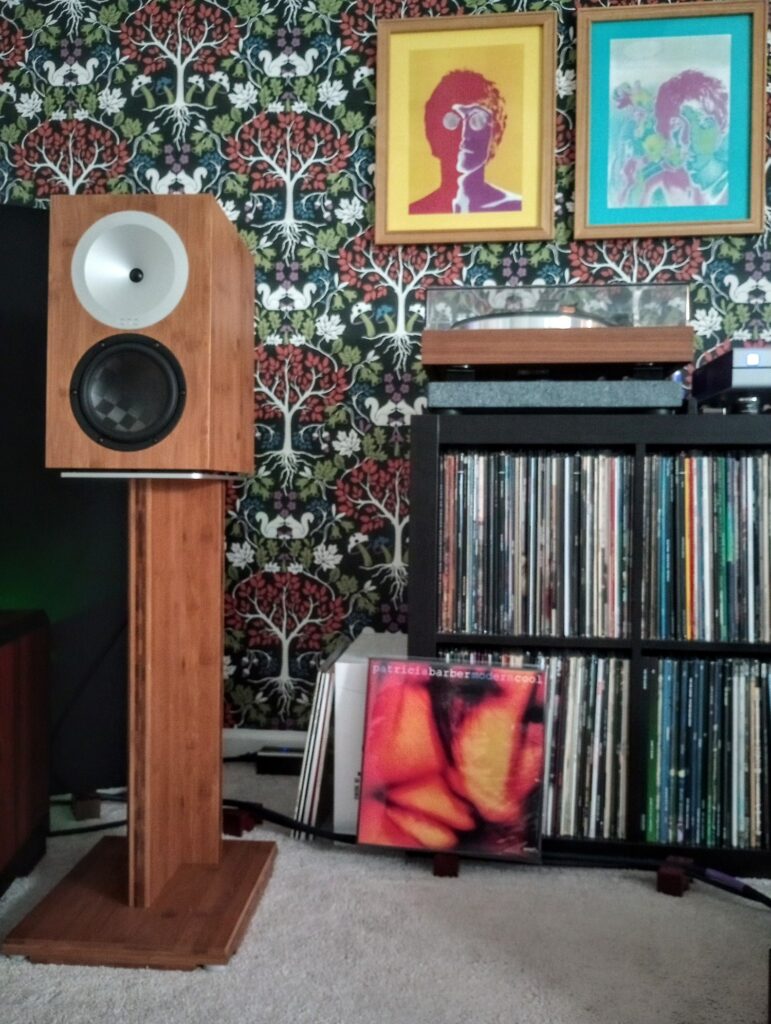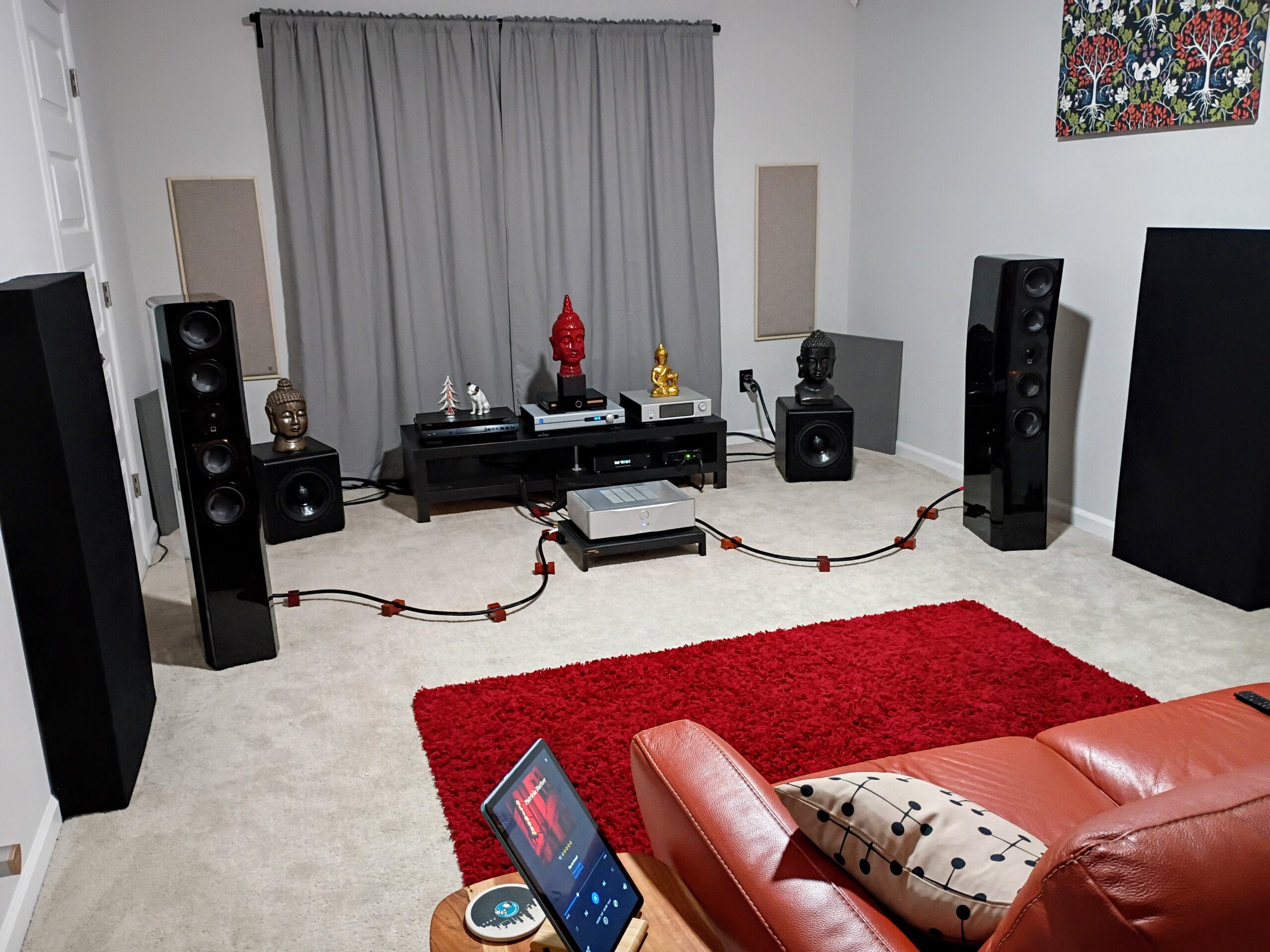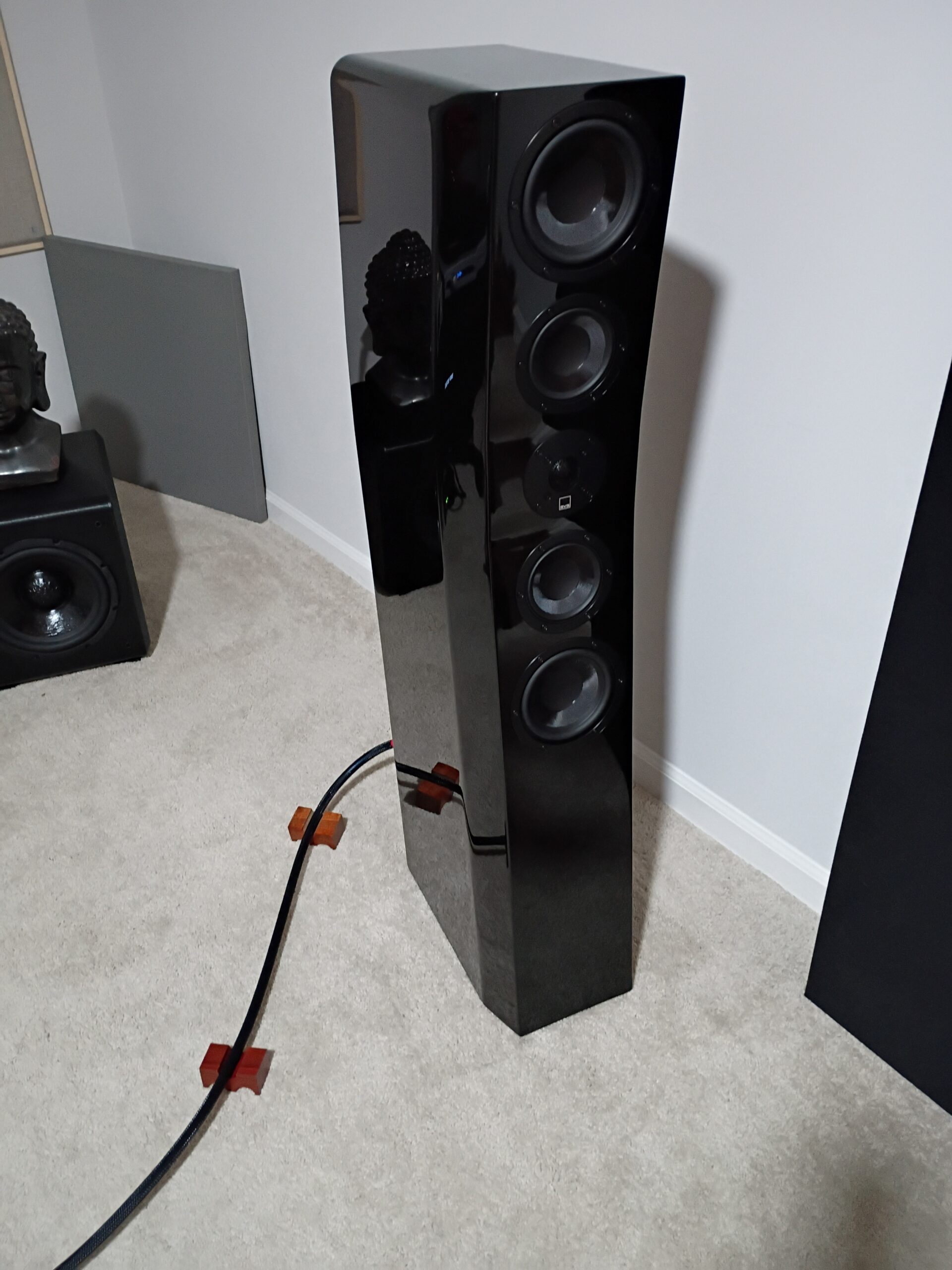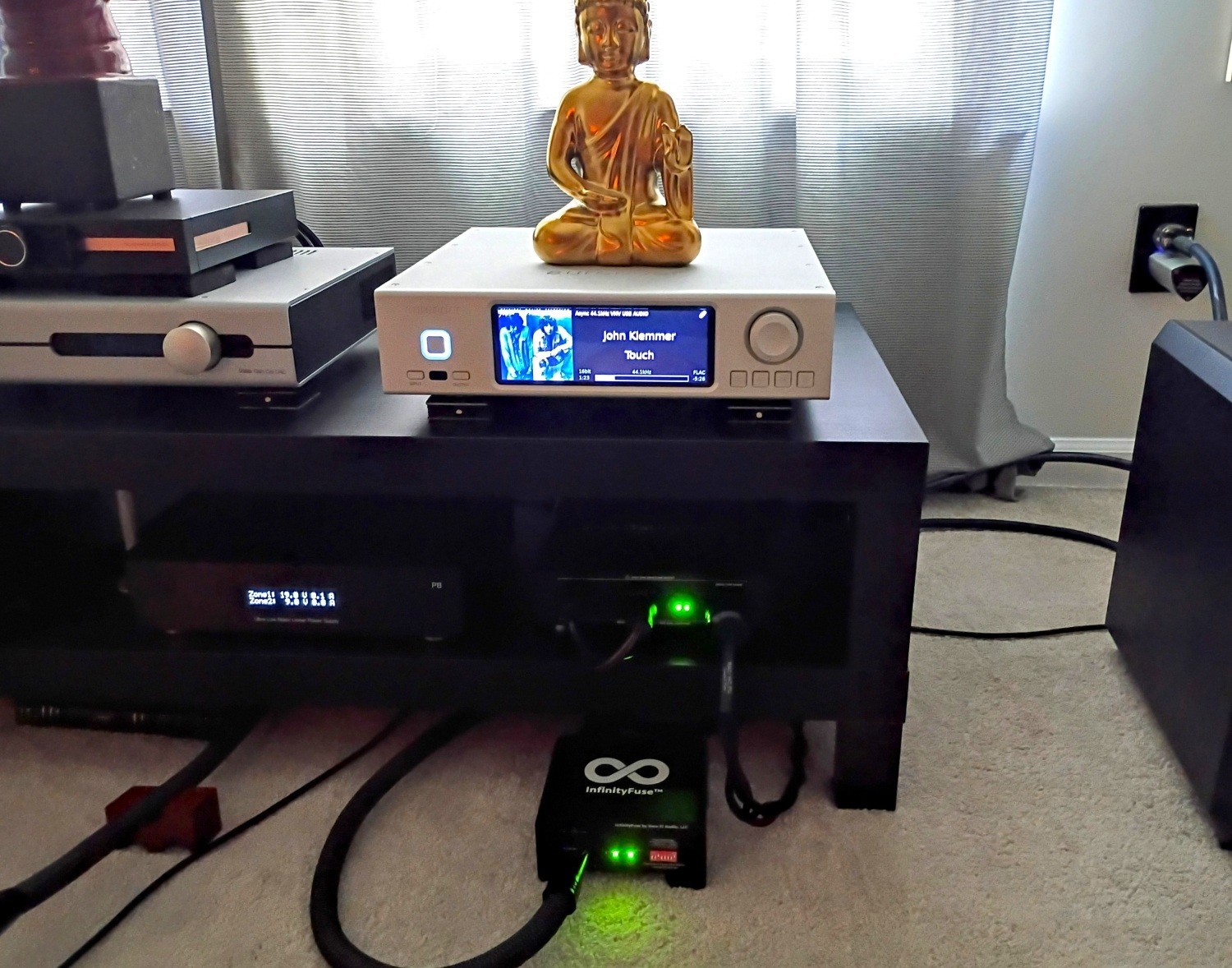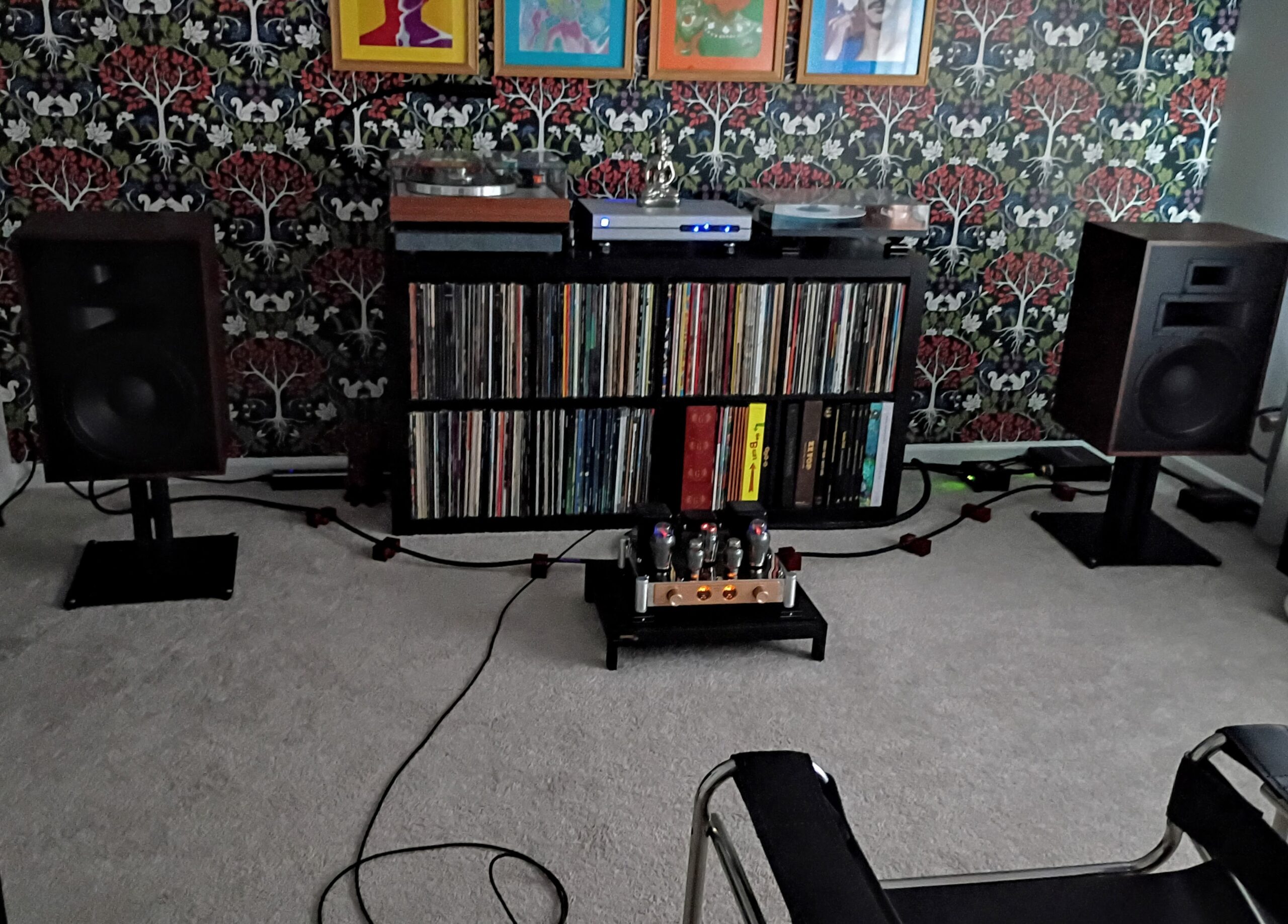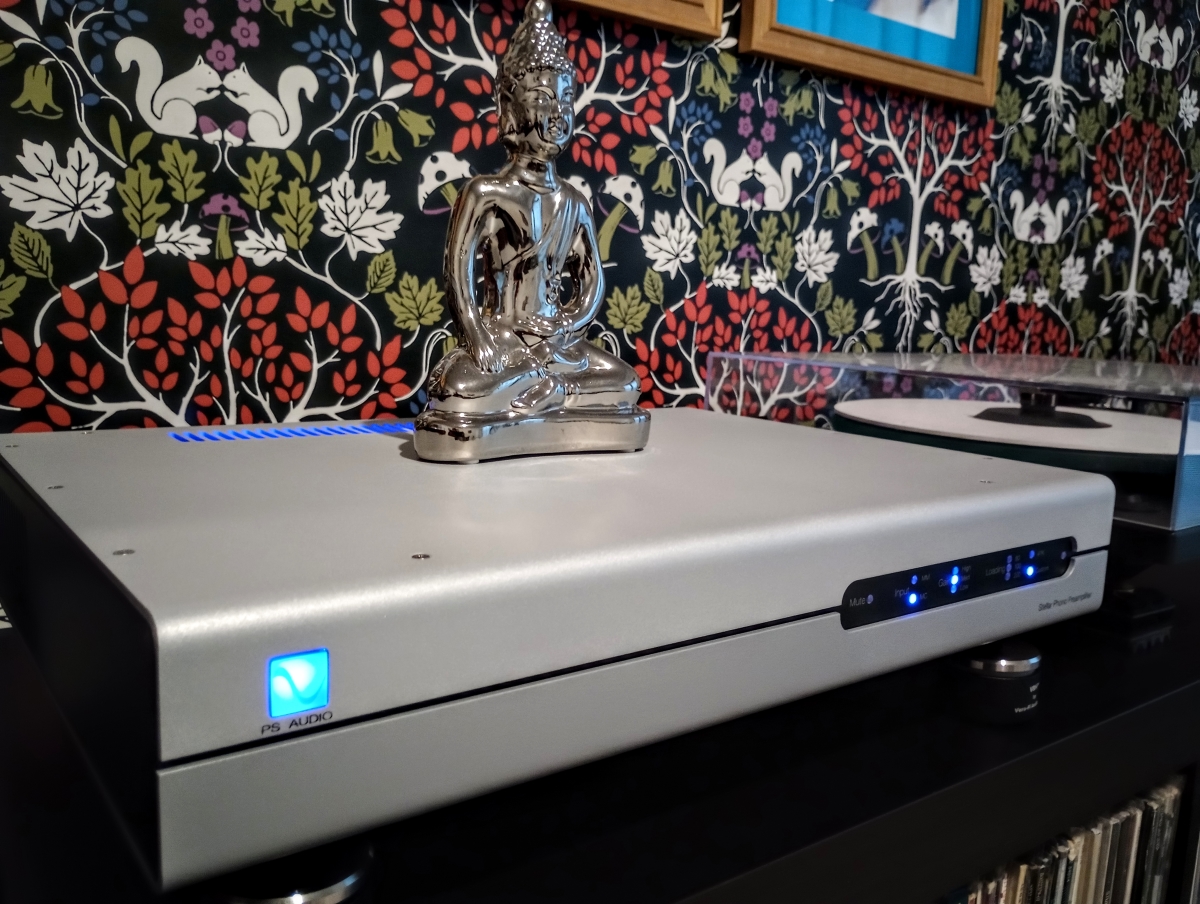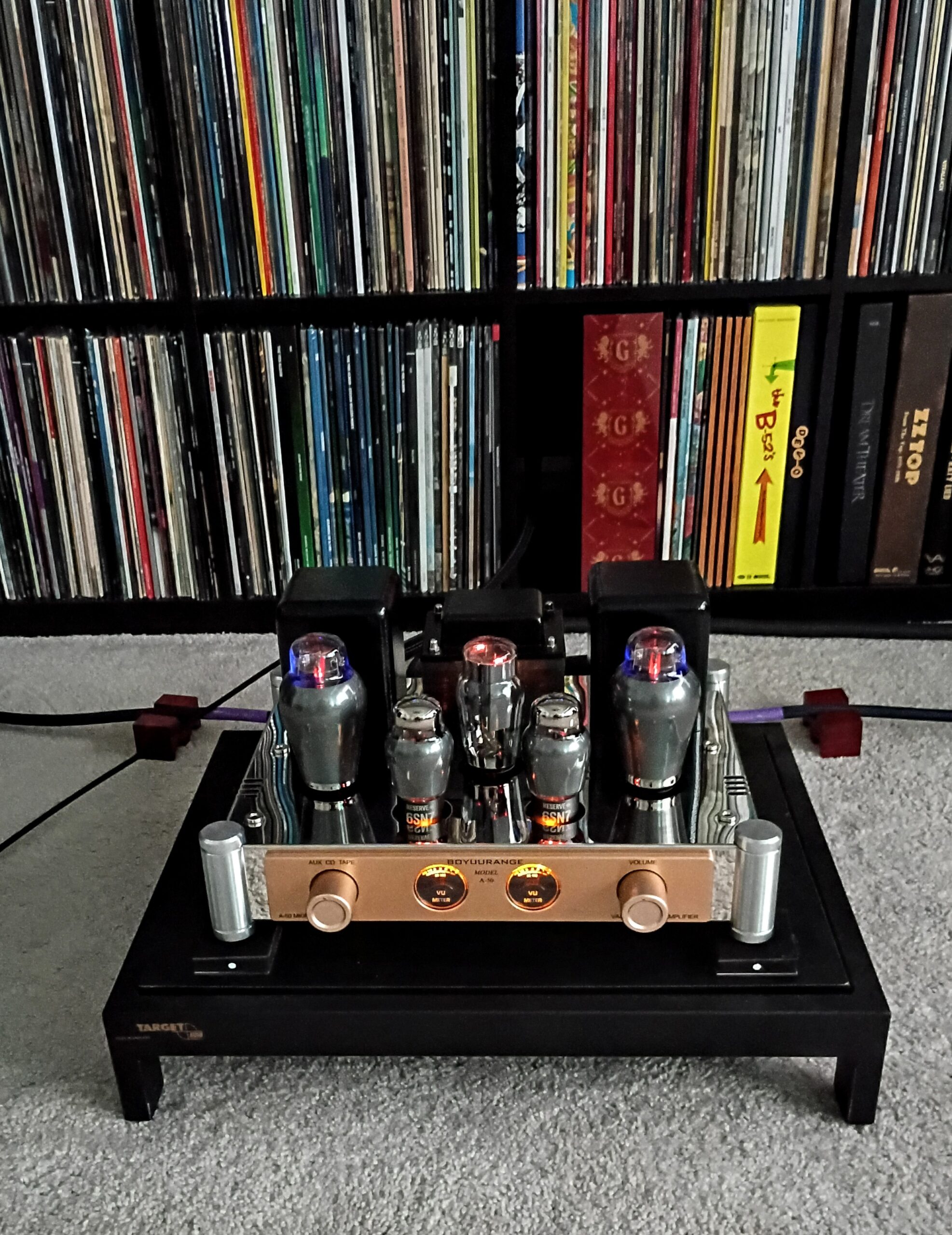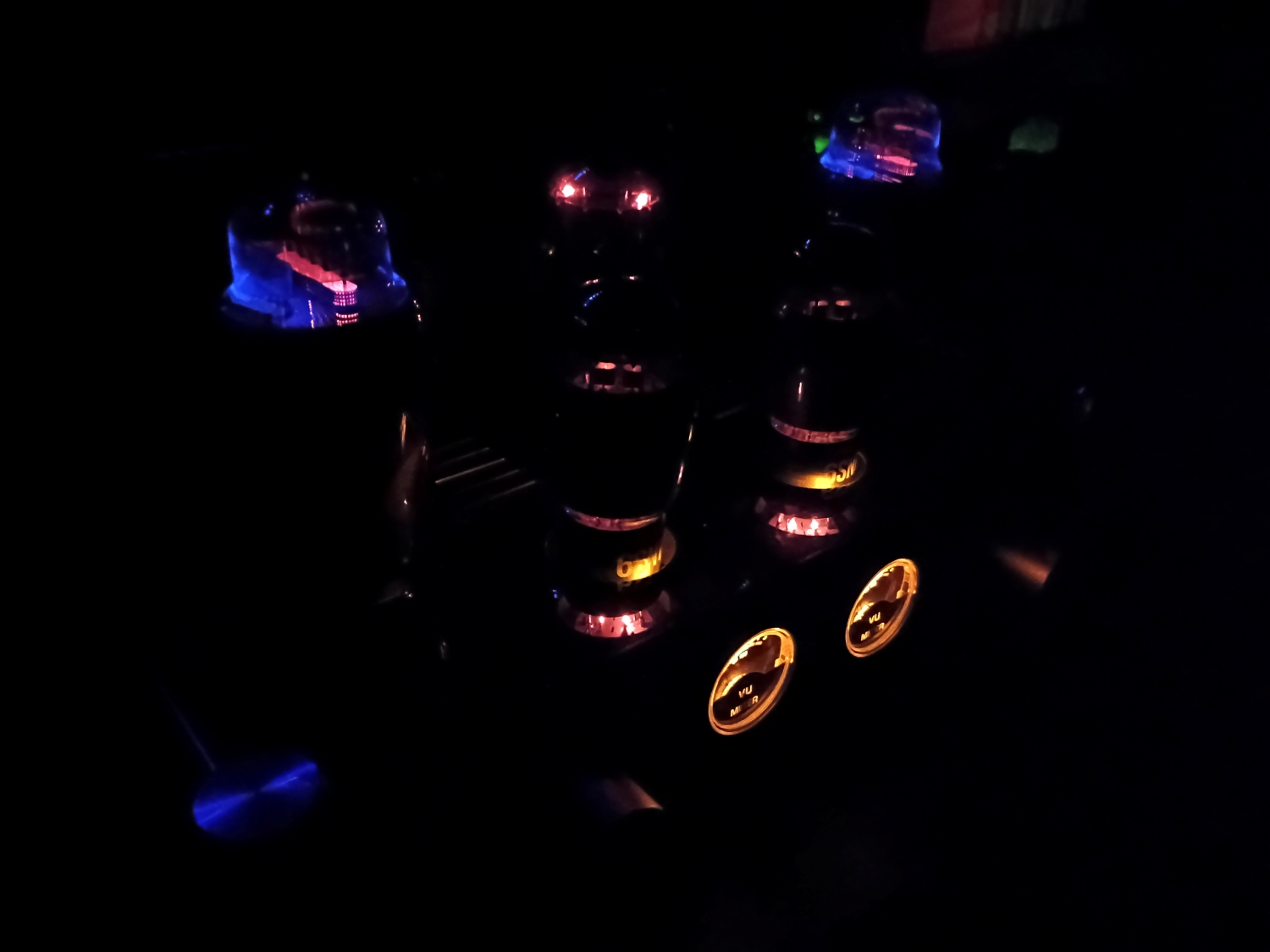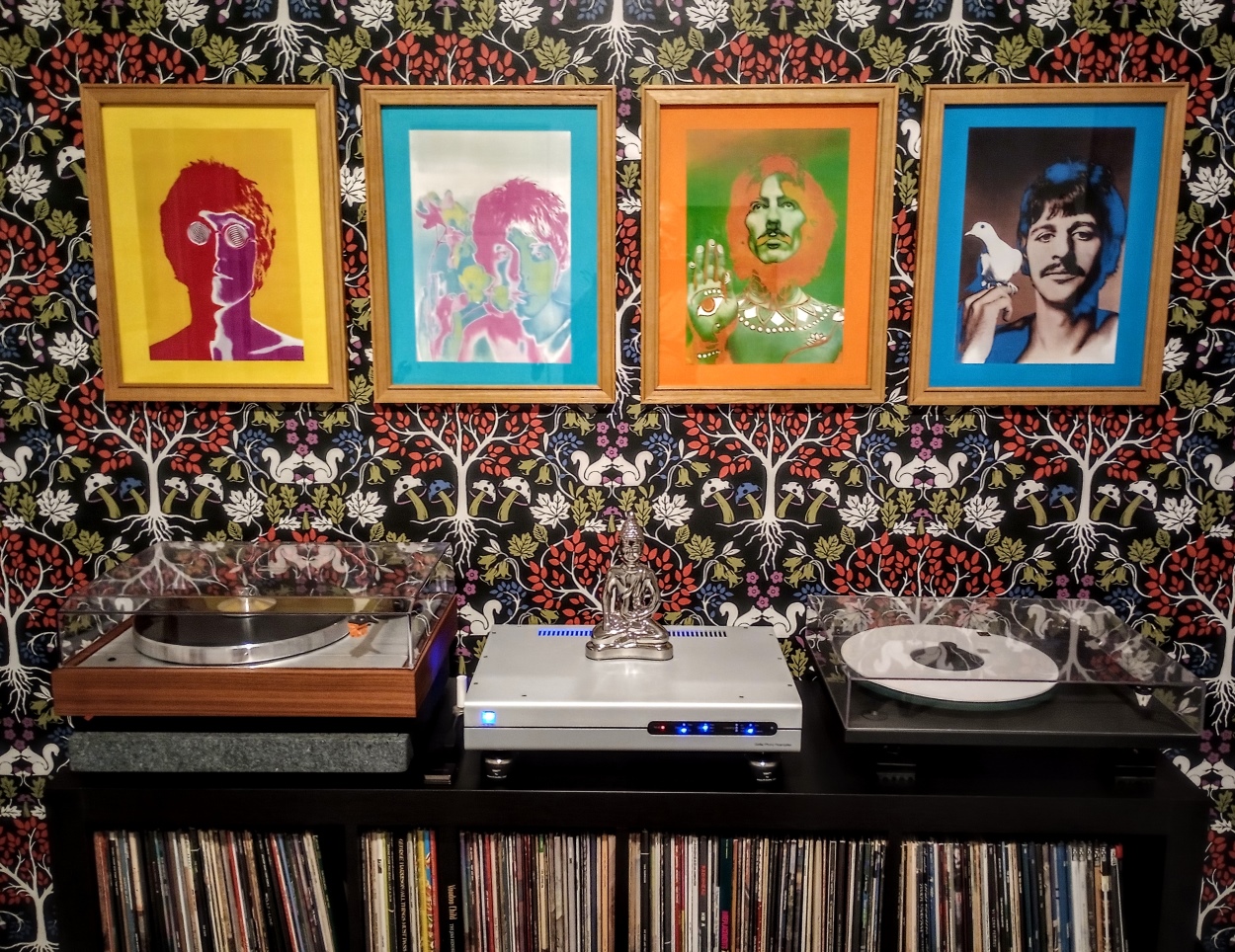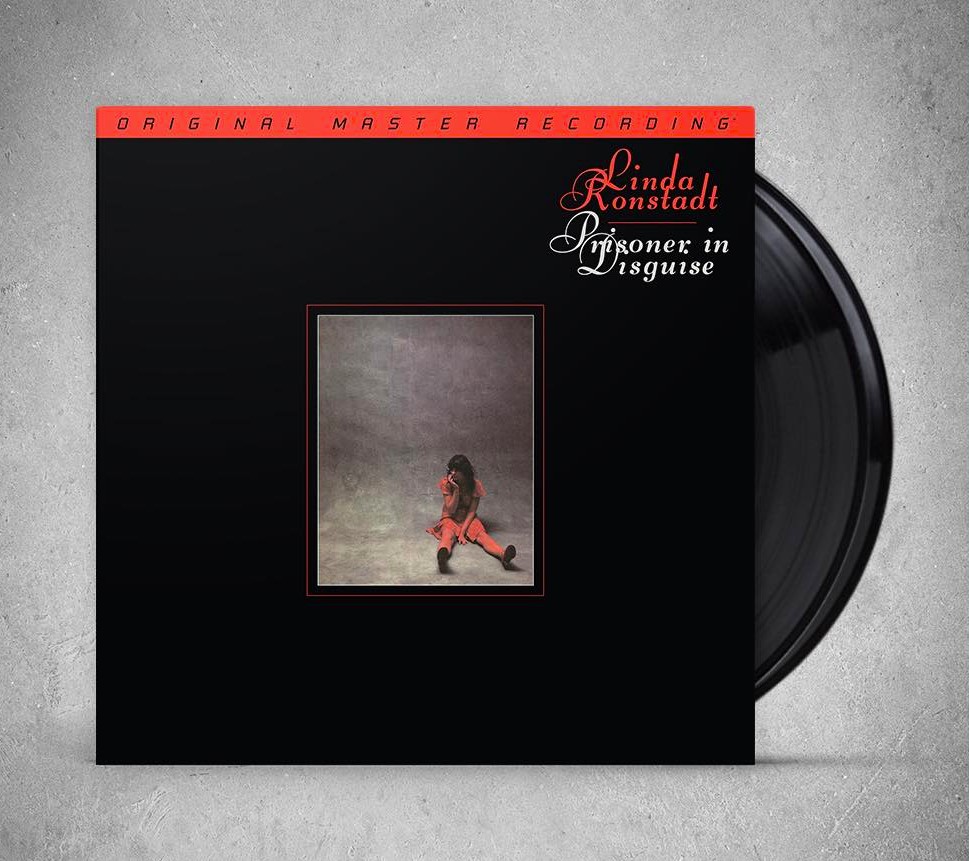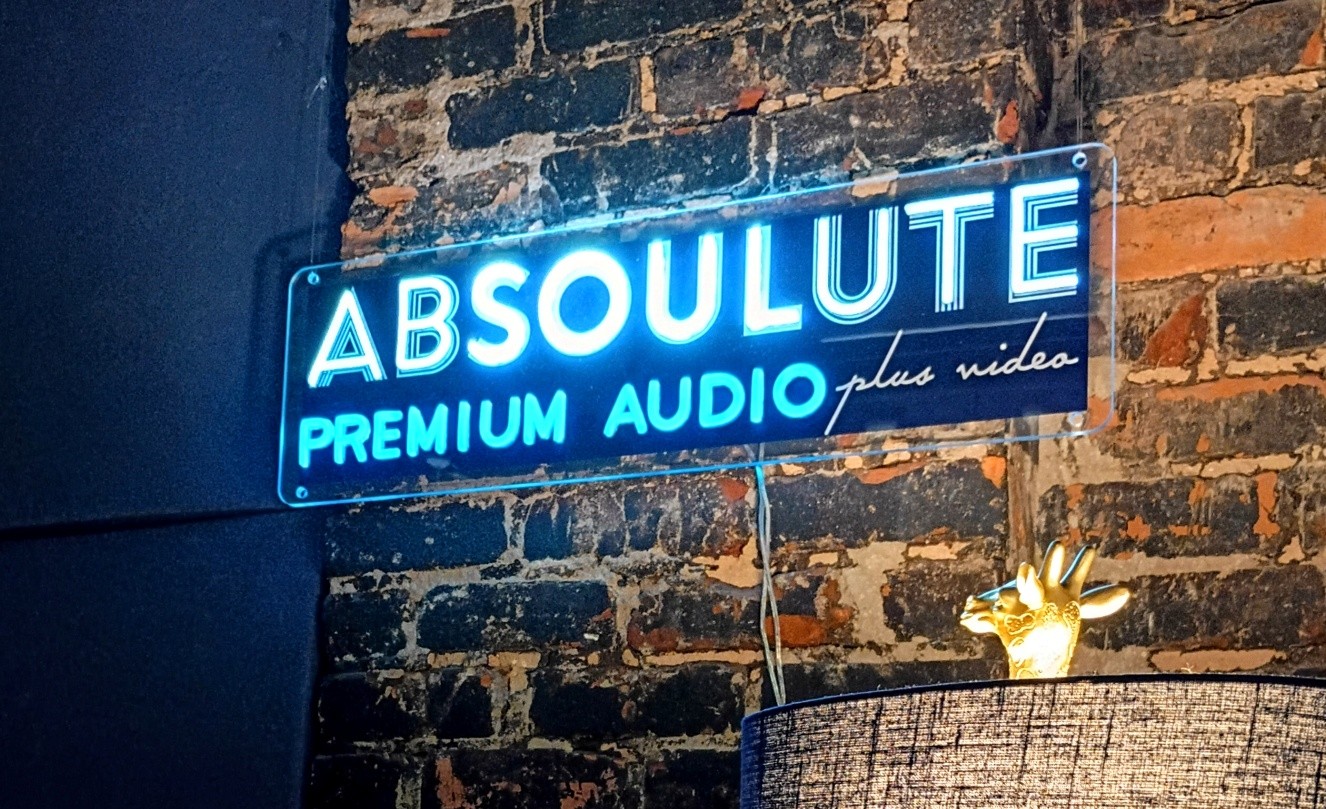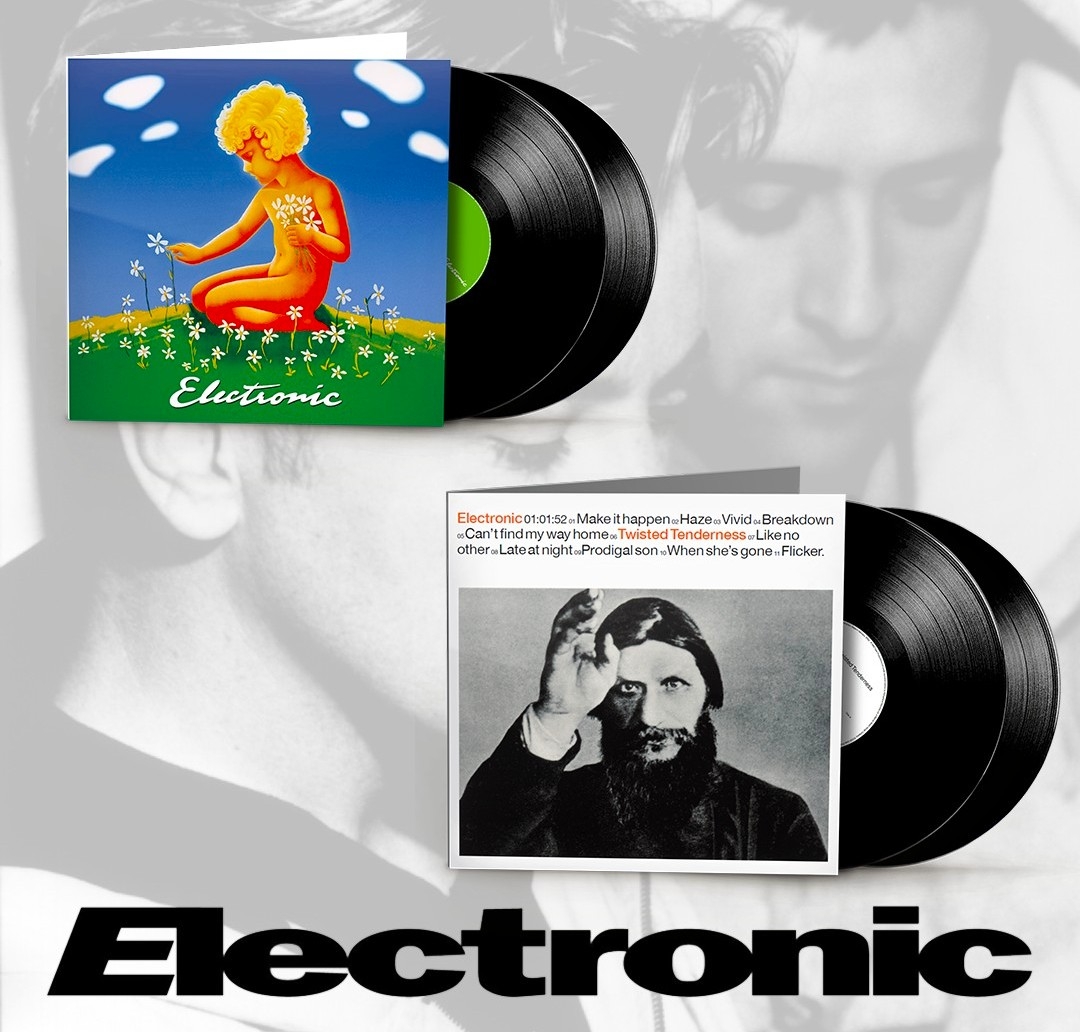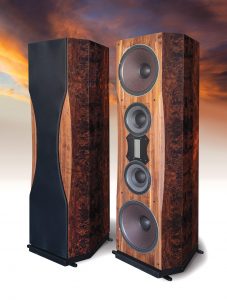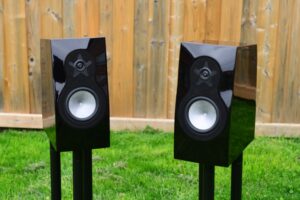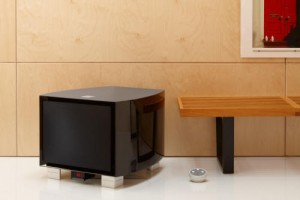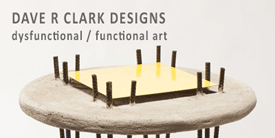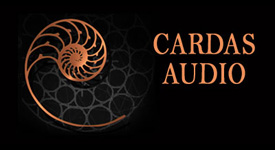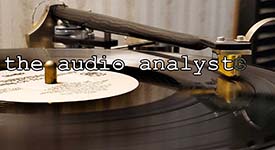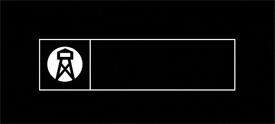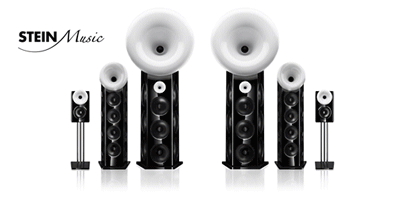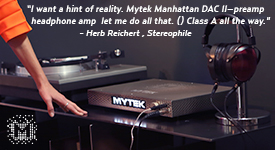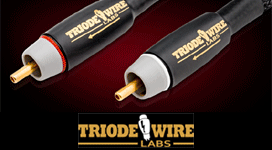ONO Tone Labs is a new loudspeaker manufacturer based in Kahului, Maui, in Hawaii, and is the brainchild of Dustin (or if you prefer, "Dusty") Vawter. Dustin has been involved in audio design and production for over 35 years, and was most recently the owner and principal designer of Channel Islands Audio (CIA). For a quarter-century, CIA produced a range of highly-regarded amplifiers, preamplifiers, and linear power supplies. Prior to that, he spent much of the early Nineties as an engineer for Audio Alchemy, the upstart that single-handedly turned early digital audio on its ear. Three-and-a-half years ago, he left California and headed to Maui, where he's been following his dream of designing and building high-end loudspeakers. ONO Tone Labs is metamorphosed from "Ono," which in Hawaiian means "delicious," so ONO Tone Labs loudspeakers produce sound with a delicious tone.
The a3 standmount loudspeaker is ONO Tone Labs' first product offering. I was aware of Dustin's background with Audio Alchemy and Channel Islands Audio, and I owned a pair of Audio Alchemy products back in the day. Including the game changing DAC-in-the-Box and their Digital Decoding Engine, which lifted my digital playback to unprecedented levels of goodness by making early compact disc players much more listenable. And I praised CIA's linear power supply, the VDC-7 MkII, in my 2017 review of Sonore's microRendu.¹ My good friend Greg Weaver, the Audio Analyst and Positive Feedback senior editor, declared Dustin's D-200 MkII amplifiers to be "world class" in his 2011 review—if you know Greg and the crazy-expensive gear in his system, that's high praise. Dustin is obviously a brilliant designer, so it didn't take any arm-twisting to convince me to agree to this review!
Finnbogi regales me with tales of the high-end audio life, Greenville, SC style!
As it turned out, the review pair of ONO Tone Labs a3's were in Greenville, South Carolina, where audio acquaintance and photographer Finnbogi Sigurdur Marinosson was shooting the product images for Dustin. Finn generously offered to drive the a3's to me in Summerville, which is just outside of Charleston, three hours to his east. I'd been looking forward to meeting Finn for quite some time, and after unloading the a3's, we sequestered to a nearby barbecue joint. Where we shared stories, offered our world views on the audio obsession, and lamented the current silly state of things over plates of barbecued ribs and pickled vegetables.
ONO Tone Labs a3's arrive in the Low Country
I'd had a hectic spring heading into early summer, with a ton of hardware and album reviews going on simultaneously. Finnbogi delivered the a3's right in the middle of all that, but I nonetheless managed to insert them into both audio systems with a variety of equipment. The a3's weren't initially the total focus of my attention, but my experiences powering them with tube, solid state, and tube hybrid amps told me a lot about how they'd respond to different kinds of amplification. And that exotic high frequency transducer grabbed my attention on day one, making my current loudspeakers sound <cough> somewhat less than involving!
My initial visual impression of them was fairly wow!—their solid bamboo cabinets and stands are truly beautiful, and bamboo is a great choice in terms of global sustainability. Dustin works with the same cabinetmakers in China that Vera-Fi Audio uses for their loudspeakers; I've raved about the seamless appearance of the Vanguard Scout monitors and Caldera subs, and the ONO Tone Labs a3's are even more strikingly beautiful! The appearance of the a3 cabinets is on par with loudspeakers I've seen that retail for many multiples of their $5995 MSRP. The available matching p3 pedestal stands ($995) are manufactured in the same shop; they're the perfect match to the a3's in terms of appearance and ergonomics. The speakers and stands are available for purchase individually, but buying them together will save you $500. The stands are exceptionally well-made, and pairing them with the a3's adds an additional level of coolness to the overall impression. Dustin offers the a3 in satin finish natural or carbonized bamboo; its structural rigidity obviates the need for internal bracing, and the absence of any veneers makes the cabinet exteriors quite durable. The review pair was supplied in the slightly darker carbonized bamboo, which in combination with the matching stands presented a striking appearance.
Each a3 measures 15" x 9" x 12" and weighs 22 lbs; their dimensions are fairly large for a standmount. The front panel contour gently slopes to improve directivity and align the drivers. The rear panel features a pair of low-mass posts for use with BFA connectors or bananas; Dustin prefers BFA connections, but the Furutech locking bananas on my Audio Art Cable Statement speaker cables provided a firm and secure connection. The a3's nominal impedance is 8 ohms, and their response spreads across a range of 40Hz to 27kHz, although they have a -10 dB downpoint in the 20Hz range. They're capable of satisfying bass response, but I still felt adding a pair of well-tuned subwoofers provided a more cohesive presentation for most of my music. I frequently switched the subs in and out to get a clear picture of how well the a3's responded to bass-heavy passages. Recommended amplifier power is from 50-200 watts, and sensitivity is rated at 87 dB at 2.83 V/1 meter. The a3's are shipped in pairs, and carry a five-year parts and labor warranty.
The finely tuned passive crossover network creates a point source; the a3's flat and smooth (both on- and off-axis) response curve has ample bandwidth, with perfect phase and exceptionally low distortion. The crossover networks are assembled on custom double-sided glass/epoxy circuit boards that use 3 oz copper; they're fitted with custom-made, European-sourced high tolerance components from Clarity Cap and Jantzen. According to Dustin, the a3's "compound-slope filter yields the excellent phase response of a 1st order filter along with the low-distortion of a 4th or higher order filter." The rear panel features a unique three-aperture slotted port array that employs what Dustin calls Resistive Aperture Tuning (RAT). And each aperture is filled with a wool, tuned-resistive material sourced from New Zealand. RAT effectively regulates the air spring of the acoustic suspension system, allowing the a3's to get tighter, deeper bass from a more compact cabinet.
All design work and manufacturing of electronics² and sub-assemblies is done in Maui, all woodwork is sourced from China, and final assembly and testing is done in California. The drivers are off-the shelf from Satori/SB Acoustics, and are carefully matched to each implementation. The 6.5-inch long-stroke mid-bass unit features a powerful neodymium motor structure, a large BIMAX spider, and a soft rubber surround that's coupled to a TeXtreme curve-linear cone. All of which guarantees true pistonic motion, superb dynamics, and a highly detailed presentation with a smooth roll-off. The three-quarter-inch tweeter is highly modified in-house to perfectly integrate with the custom billet, sculpted aluminum wave guide. Its response is similar to that of a mild horn, providing controlled directivity and peerless off-axis response. Its 130 degree dispersion reduces reflections and creates a wide and deep soundstage, with smooth, low-distortion treble response that extends to 27kHz. The a3's high frequency performance is fairly dazzling, to say the least!
Listening with the PrimaLuna EVO 300 tube integrated amp
To get a closer look at the full contents of my dual audio systems, click on my name in the header at the top of the page. I recently updated the PrimaLuna EVO 300 with a full set of RAY Tubes, including a quad of Reserve EL34 and a sextet of Select 12AU7. RAYs are the best of the best; after months of rolling them with NOS and other premium tubes, I'm totally convinced of that. I spin a lot of LPs in the analog system, which along with the upgraded EVO 300 also features PS Audio's superb Stellar phono preamp. My dual turntables are equipped with Ortofon cartridges, including a ProJect Classic EVO that's fitted with a Quintet Bronze MC cartridge, along with a modified Rega Planar 2 that's fitted with a 2M Mono cartridge. And a pair of Vera-Fi Audio Caldera subwoofers add a couple of extra octaves of low bass to the overall system response. I recently upgraded the power conditioning in the room with Vera-Fi's all-new Line Noise BlackHole and Snub Station Zero devices; the improvements they've made might easily be the most significant upgrade to any of my audio systems—ever!
Dustin instructed me to place the a3's in a classic triangle arrangement from my listening position, with no toe-in and the loudspeakers facing completely forward. My analog source room is the smaller of the two, and is set up in a near-field listening arrangement; the positioning of the a3's basically replicated what I already had going on with the XSA Labs Vanguards that usually occupy this environment. As my listening sessions continued, I eventually added a bit of toe-in, which I felt more clearly locked in the center image. The EVO 300 amp's complement of EL34 power tubes output around 43 wpc in the amp's ultralinear mode, and I never felt the a3's were underpowered at any point during this phase of the evaluation.
One of the LP sets I use regularly for evaluation is Impex Records' superb 1STEP 45 rpm reissue of Patricia Barber's Nightclub. Which offers a really scintillating mix of her jazzily-inspired take on a diverse range of tunes spanning popular song, tin-pan alley, standards, and even bossa nova. Barber delivers each tune with her smoky-sweet alto voice, and apart from Charlie Hunter's electric guitar, it's a mostly acoustic affair. Impex's 45 rpm LP set delivers the performances with exceptional realism, and it's a great album for setting subwoofer levels. I always use great acoustic bass to integrate subs with the main loudspeakers; it results in greater realism of sound, and will lock in correct levels for everything else in your playback. It took about two minutes to get the subs playing seamlessly with the a3's. And for full disclosure, I typically listen at reference levels, such that it generally really sounds as though the performers are live in my listening room.
Probably the most challenging track on the set is "Autumn Leaves," where Marc Johnson's acoustic bass can present some difficulty to smaller, but full-range loudspeakers. I almost immediately noticed a slight tubbiness during Johnson's solo, but after switching off the subs, the bloated bass character remained. I started my usual process of incrementally moving the speakers and rejiggering room treatments—which helped, but didn't completely get rid of that slight tonal aberration. Most of the album sounded perfect, with only "Autumn Leaves" presenting a problem. At this point, I started playing another great Patricia Barber record, Impex's new 2-LP reissue of Modern Cool, which offers a more adventurous mix of originals and standards. Several of its selections also feature fairly challenging bass content—and that slightly tubby bass tone was still clearly present. Even pulling the speakers a bit further into the room didn't completely eliminate it, though that did help it become less objectionable.
Aside from the bass tick I was experiencing—and that was only with a few challenging tracks—the sound I heard from the a3's was nothing short of exceptional, especially their sparkling midrange and treble response. They played music with greater clarity, with a more perfectly formed stereo image, and had better width and depth than what I was used to hearing from the XSA Vanguards. It was as if Patricia Barber and her group were live and in the room with me! After failing to eliminate the problem, I took the next logical step and moved the a3's into my larger (13' x 20' x 9') room where the digital source equipment resides. And that solved everything—well, almost.
Listening with the Advance Paris A12 Classic hybrid integrated amp
When I relocated the a3's to the room next door, I moved them about six feet from the front wall and fairly close to the side walls. With a bit of toe-in, and with acoustic panels placed to minimize the first reflection points. The bass imbalance I couldn't unhear in the smaller room now completely disappeared; either a room node was excited by the 6.5-inch bass driver, or the a3's needed a bit more volume to really sing. Unfortunately, an ongoing problem in the digital source room came to the fore: the Advance Paris A12 Classic hybrid integrated amplifier (190 wpc/8 ohms, also in for review) had developed a bit of an unpleasant upper-mid/treble tone during playback. It had become clearly noticeable with the KLH Model Fives, and you could also hear it with the a3's.
The A12 Classic is a Class A/AB solid state amp that features a tubed preamp section, and I totally believed the stock tubes in the A12 were the culprit. Having developed a good rapport with the folks at RAY Tubes, I reached out to their CEO Nelson Wu, who sent a pair of his ne plus ultra Select 12AT7 preamp tubes to replace the stock Psvanes in the A12. The Select tubes were perfectly matched to the A12, imbuing a greater sense of clarity to the mid and treble tone, eliminating the problem completely, and lifting its performance to something more closely approaching world class. You could clearly hear the improvements over the ONO Tone Labs a3's.
In the digital source room, the playback equipment includes an Aurender A1000 network player, an S.M.S.L. VMV D2R DAC, and the Euphony dual-box server/streamer that also converts everything to pure DSD. I mixed and matched streaming sources as appropriate, with balanced inputs into the A12 Classic, and occasionally using a USB connection from the Aurender to the A12's internal Burr-Brown DAC. Following the tube upgrade, regardless of the source, playback from this system was rendered with thrilling musicality and realism, and superb clarity of tone. The ONO Tone Labs a3's really sang in this system!
Dustin insists the a3's are equally at home with tubes or solid-state, so I expected the hybrid A12 should also provide near-perfect amplification. I put them through their paces with my usual torture test tracks from groups like Yello and Kraftwerk—which, by the way, they handled with zero issues, although I felt the pair of subs were definitely needed to get the full visceral impact of those albums' subterranean bass content. Yello's classic album One Second opens with "La Habanera," where a large truck fires up and proceeds to roar across the soundstage. It's a nifty sound effect, and the a3's were able to replicate the demanding mid-bass content of this track at reference volume levels and with impressive realism. And without so much as a blink.
Another great track for loudspeaker evaluation is "A Nightingale Sang in Berkeley Square" from the Harry Connick, Jr. album We Are In Love. Although much of the album features a full orchestra, this is a trio track that opens with Benjamin Jonah Wolfe's acoustic bass on the left, which is soon joined by Branford Marsalis' tenor sax on the right, with Harry Connick's voice front and center. On a really good system, the performers float across a soundstage that's painted from behind the loudspeakers and across the room; Wolfe's bass has a nice, woody tone, and the incredible richness of Marsalis' horn is portrayed with uber realism. Connick's distinctive baritone voice is so very palpable, you can virtually reach out and touch him in front of you. The a3's passed this test with flying colors, completely disappearing in the soundstage, and rendering this performance effortlessly with a level of realism approaching the best of any speaker I'd ever heard. Generally only my Magneplanars are capable of this kind of disappearing act!
Gaining an appreciation for the voice of German cabaret singer Ute Lemper is something of an acquired taste, and her non-native English language dialect can come across as a bit grating via less capable electronics and loudspeakers. One song in particular, "I'm A Stranger Here Myself" from Ute Lemper Sings Kurt Weill, can easily come across as piercingly harsh. But with the new tubes in the A12 Classic, the a3's were able to reproduce the song's finale with gusto, and without a trace of harshness—Lemper's voice across the a3 was almost angelic! Even opera singer Olga Peretyatko's multi-octave, tour-de-force performance of "Una Voce Poco Fa" taken from Rossini's Barber of Seville and the album Rossini was portrayed with piercing intensity. The a3's did not disappoint; though during playback, I noticed an excessive amount of low-frequency information pouring forth from the system as Peretyatko hit one of those unbelievable sustained notes. So I switched off the subs to see if what I was hearing emanated from the a3's—nope, several replays confirmed it was definitely coming from the subs.
The a3's responded well to the A12 Classic's hybrid amplification; that said, they're slightly less efficient than my KLH Model Fives, and I often had to goose the volume level of the A12 close to its maximum setting to obtain the correct playback level. But the A12 never ran out of gas, and the a3's never flinched or gave the slightest hint it was under stress at any point during the evaluation. And that was with the A12 switched into its high bias mode, where it played in pure Class A for the first watt, then switched to Class AB for any transients that demanded more power. If its power meters were anything close to accurate, most of my listening to the a3's was in pure Class A, and the sound was never less than superlative.
Listening with the Naiu Labs Ella power amp
After the Advance Paris amp was pulled from the system and boxed for return, the German made Naiu Labs Ella Stereo amplifier was returned to its normal post, and the digital source signals were re-routed to my PS Audio Stellar preamp. The Naiu Ella is a brute of a Class AB amplifier, capable of outputs of 250 wpc (8 ohms), 500 wpc (4 ohms), and 1 KW (2 ohms); it's an unusual design in that it uses a power supply that's more closely akin to what you usually see in Class D amplifiers. The manufacturer utilized single-ended triodes to voice this amplifier, and he agonized for years to perfect his circuit design. The Naiu Ella is powerful, but has a top end that resembles what one might typically hear from tubes, and has excellent control over any connected speaker load. Even working perfectly with fussy Magneplanar panels that often see their impedance dropping near 2 ohms across much of the spectrum. I didn't expect any problem with the ONO Tone Labs a3's, and I didn't encounter any.
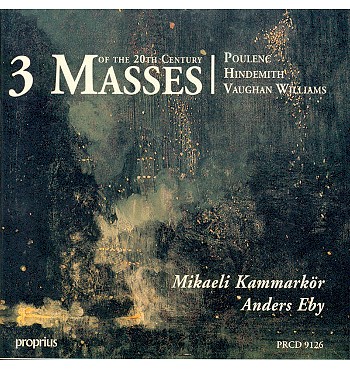
I listened to many of the same tracks used in the PrimaLuna part of the evaluation (although in their DSD form for this implementation), as well as those played through the Advance Paris amp. Through the Naiu Ella, the a3's produced a sound that was controlled and authoritative, with precise imaging. A track that frequently gets used in my evaluations is from the Proprius Records recording Three Masses of the Twentieth Century, performed by the Mikaeli Kammarkor conducted by Anders Eby. In Poulenc's Mass in G Major, the fifth movement "Agnus Dei" prominently features a soprano soloist whose impressive vocal range will rattle the drivers of less capable loudspeakers. The a3's delivered this challenging but hauntingly beautiful track with uncanny precision, and you could literally pinpoint the locations of the individual members of the choir across the soundstage. I've heard this track countless times across many systems, but the level of clarity and stunning realism presented by the a3's was astonishing!
For a more orchestral perspective, I listened to the second movement "Lento" from Vaughan Williams' A London Symphony conducted by Richard Hickox on Chandos Records. The Lento opens in a more pastoral mood with strings, woodwinds, and trumpet, slowly building to a series of heavily percussive, rolling crescendos that will shake your home's foundation. Of course, the subs do much of the heavy lifting, but the main loudspeakers have to maintain their composure while reproducing these challenging transients. The a3's played this music with the requisite level of bombast, and never showed any signs of strain, portraying a full orchestra with the kind of realism I generally only hear from much larger loudspeakers. Color me impressed!
Another great recording that will challenge any amplifier/loudspeaker combination is conductor Mark Wigglesworth's recording of Shostakovich's Symphony No. 1 on BIS Records. The second movement "Allegro-Meno Mosso" features bone-crushingly percussive transients that can lay waste to less capable loudspeakers, but the a3's sailed through the movement unrattled. While virtually disappearing in the soundstage; very little sound seemed to be emanating from the a3's, with the orchestra painted above, behind, and beyond their boundaries.
Final Impressions
The ONO Tone Labs a3's grabbed my attention with precise imaging and impressively fluid high frequency performance. Reproducing the human voice can be particularly troublesome for many loudspeakers, but the a3's rendered difficult recordings effortlessly, and without any trace of etch or distortion. Some listeners might find the a3's low-end performance lacking, but their overall sound is surprisingly balanced.³ That said, for the styles of music I typically listen to, the a3's presented a more cohesive musical statement when integrated with a pair of competent subwoofers.
I found the a3's ability to work well with a diverse range of amplification equally impressive, whether from ultralinear tubes, a pure Class A solid-state/tube hybrid, or a Class AB solid state—the a3's retained essentially the same sonic character throughout my evaluations. Especially once I'd determining which room position best served them. The a3's are an auspicious debut for ONO Tone Labs, and I found them to be musically and emotionally engaging. Their obvious strengths include their impressive power handling, exceptional realism of sound, precise imaging, lack of any noticeable distortion, and of course, their sparkling treble performance. And the a3's projected images that had a scale of sound that was definitely unexpected from a standmount loudspeaker! At this price point, the competition is intense, but the a3's definitely deserve your consideration.
Thanks to Dustin Vawter for all his assistance during the a3 evaluation, and to Finnbogi Sigurdur Marinosson for his willingness to Sherpa them from one end of the state to the other. The ONO Tone Labs a3's come highly recommended!
a3 Standmount Loudspeakers
Retail: $5995, sold in pairs
p3 Pedestal Stands
Retail: $995, take $500 off the cost of stands when ordered with the a3's
ONO Tone Labs (the website is currently under construction)
All photos courtesy of ONO Tone Labs and the author.
¹ CIA's LPS was intended to have greater focus in the review, until Sonore insisted I use their own recently launched LPS at the eleventh hour.
² Upcoming ONO Tone Labs loudspeaker designs will feature active amplification elements; all electronics will be built on-site in Maui.
³ As a Magneplanar devotee for decades, I fully understand how very satisfying a loudspeaker can be with a low-bass cutoff around 40 Hz. For many listeners, this won't be an issue.

